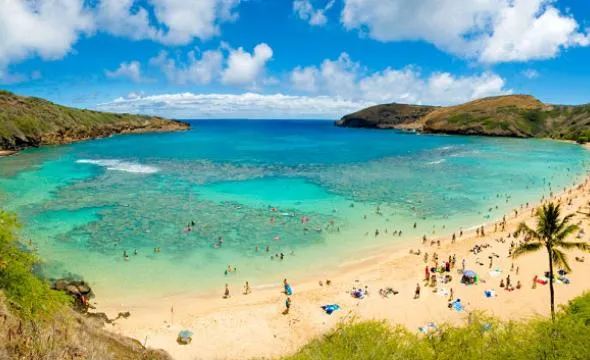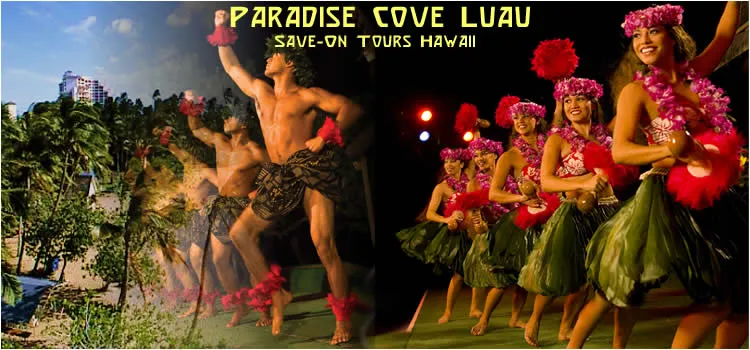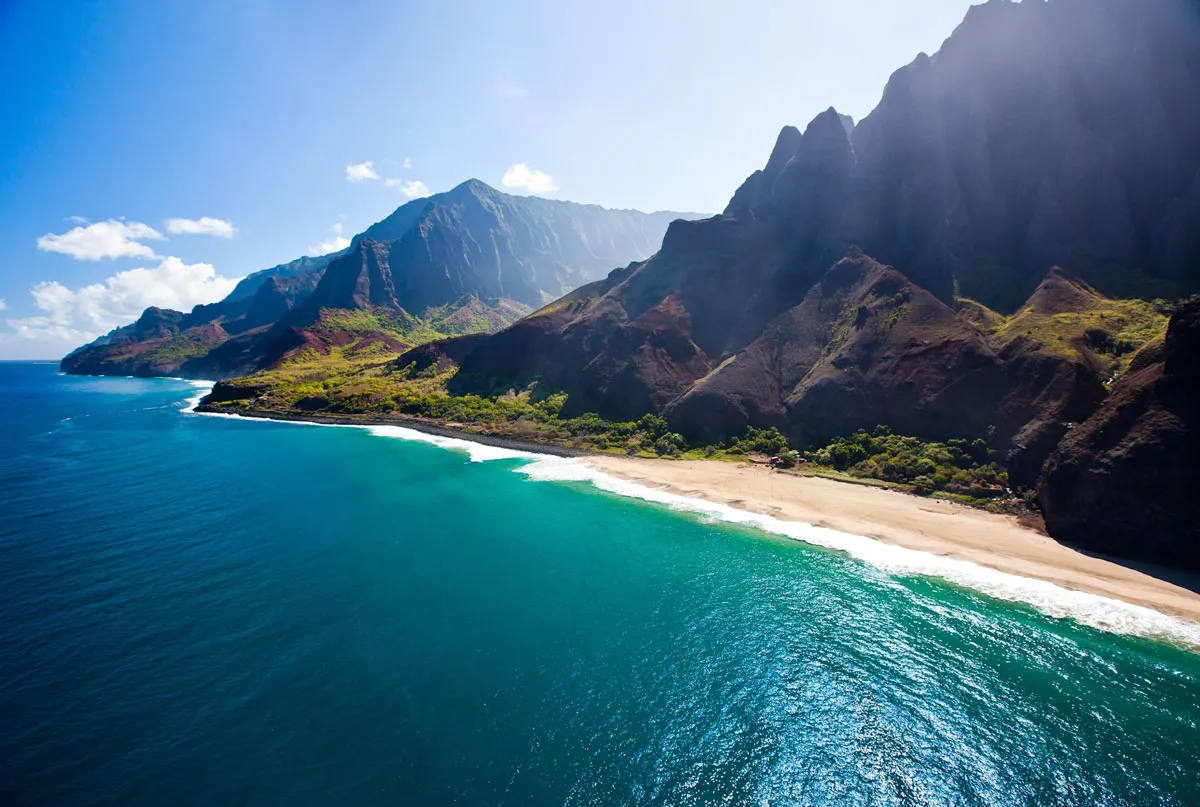Hawaii, the paradise island in the Pacific Ocean, is renowned not only for its pristine natural beauty with white sandy beaches and turquoise waters but also for its rich history and unique cultural heritage. Hawaii’s coastal roads are more than just transportation routes connecting breathtaking destinations—they are witnesses to history, safeguarding stories of the past and the cultural imprints left by the native people.
Exploring Hawaii is not just a simple trip; it’s a journey into the history, culture, and traditions that have been preserved throughout generations. Let’s take a closer look at the stunning coastal roads, where the harmony of natural beauty and historical significance come together to define Hawaii’s timeless allure.
Hanauma Bay – A Testament to Nature’s Revival
Hanauma Bay, one of America’s top ten most beautiful beaches, is a breathtaking testament to the resilience of nature. Once overrun by excessive tourism, the bay has been restored to its pristine glory through rigorous conservation efforts. Visitors now flock to Hanauma not only for snorkeling adventures but also to marvel at nature’s wonder and to reflect on the importance of environmental protection.

Snorkeling in Hanauma Bay is an unforgettable experience. With its crystal-clear waters, visitors can easily observe vibrant coral reefs and hundreds of colorful fish species. It’s also an opportunity to learn about Hawaii’s diverse and rich marine ecosystem.
Waikiki Beach – The Birthplace of Surfing
Waikiki Beach in Honolulu is not just a globally famous tourism spot but also the birthplace of surfing. The consistent and long waves of Waikiki provided the perfect conditions for the development of this water sport, which has since become an inseparable part of Hawaiian culture.
Today, Waikiki remains a haven for surfing enthusiasts from around the world. Visitors can rent surfboards and take lessons to experience the adrenaline rush of conquering waves. In addition to surfing, Waikiki offers other water sports, including kayaking, snorkeling, and sailing.
Papakolea Beach – Hawaii’s Green Gem
While Hawaii’s white sand beaches are iconic, Papakolea Beach stands out with its rare green sand. Its stunning green hue comes from olivine crystals, a mineral found in volcanic lava. Papakolea is one of the few green sand beaches in the world and a must-visit destination for those seeking Hawaii’s unique natural wonders.
Reaching Papakolea requires a hike or a ride in an off-road vehicle, but the breathtaking views and the extraordinary experience of visiting this rare beach are well worth the effort.
Paradise Cove – The Cultural Heart of Hawaii
Paradise Cove is a famous resort area where visitors can immerse themselves in Hawaii’s rich cultural traditions. Here, you’ll experience the lively atmosphere of traditional Hula dance performances, savor local Hawaiian delicacies, and learn about the unique customs of the island’s people.

During special festivals throughout the year, Paradise Cove brims with excitement, offering traditional cultural activities that attract a wide array of visitors. It’s the perfect opportunity to dive deeply into Hawaii’s authentic cultural experience.
Kauai Island – Hawaii’s Oldest and Most Majestic Island
Kauai, the oldest island in the Hawaiian archipelago, is an enchanting blend of history and natural glory. Its waterfalls, the crystal-clear waters and white sands of Nā Pali Coast, and the vibrant coral reefs lining the palm-studded Kee Beach create a stunning tapestry of nature’s wonders.

For adventure seekers, the Waimea Canyon, plunging over 3,000 feet down, is a must-see attraction. Additionally, visitors can explore the island’s lush rainforests and serene valleys, creating unforgettable scenic memories.
USS Arizona Memorial – A Historical Landmark at Pearl Harbor
The USS Arizona Memorial at Pearl Harbor is a solemn historical site honoring the 1,102 sailors and Marines who perished during Japan’s surprise attack on Pearl Harbor in 1941. Built directly over the submerged remains of the USS Arizona, the memorial is accessible by boat and offers a deeply moving experience.
This landmark holds immense historical significance, providing visitors with a profound understanding of one of the pivotal events in United States history.
Conclusion
Hawaii’s coastal roads are far more than transportation routes—they are paths to uncovering history, culture, and the island’s stunning natural beauty. From the revival of Hanauma Bay, the vibrant surfing culture in Waikiki, the unique green sands of Papakolea Beach, and the lively traditions of Paradise Cove to the grandeur of Kauai Island and the solemnity of the USS Arizona Memorial, every destination tells a unique story, weaving together Hawaii’s heritage and charm.
If you’re ready for a journey filled with breathtaking landscapes and profound cultural experiences, Hawaii’s historic coastal roads await your discovery. Are you prepared to embark on this unforgettable adventure?